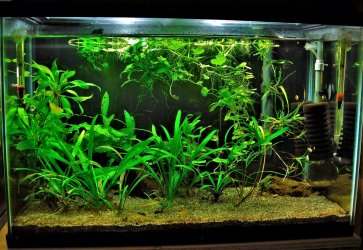**sarahp**
Fishaholic
So, I’ve never bothered before but I’ve had a bit of a scare this week. I bought some more guppies and all but 2 have died since Sunday.
All my established fish seem fine but I’m terrified that I may have introduced something grim into my tank.
Now I’m on the look out for a second hand tank to use as a QT tank. For those of you that have them, do you keep them running all the time or do you just set them up as and when?
All my established fish seem fine but I’m terrified that I may have introduced something grim into my tank.
Now I’m on the look out for a second hand tank to use as a QT tank. For those of you that have them, do you keep them running all the time or do you just set them up as and when?



